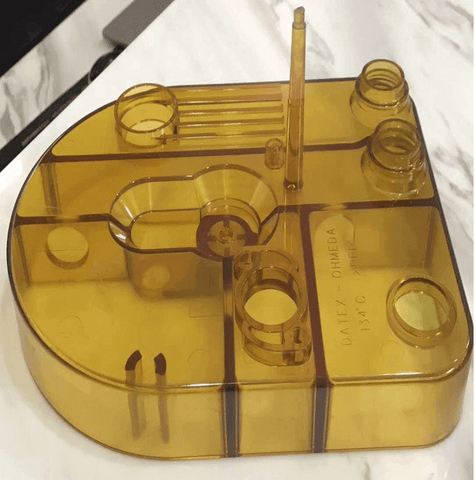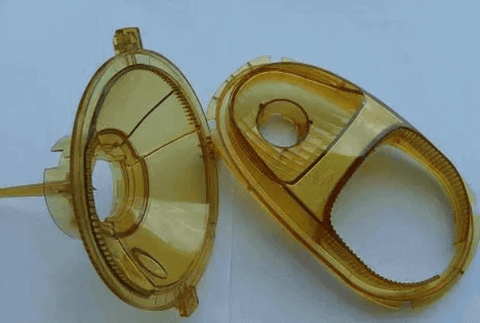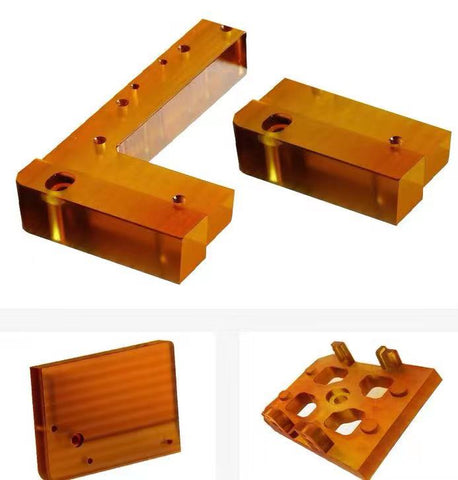Advances in plastic materials are enabling the future of electronics. One of the most promising plastics for electronics is polyetherimide, or PEI. This high-performance plastic has unique electrical properties that make it ideal for various electronics applications. As electronic devices become smaller, faster, and more powerful, the right materials are crucial. PEI plastic allows electronics manufacturers to innovate and push boundaries.

An Introduction to PEI Plastic
PEI plastic, also known as Ultem, is an amorphous thermoplastic that offers an exceptional combination of properties. It has high heat resistance and mechanical strength combined with inherent flame retardancy. Importantly, PEI boasts excellent electrical properties like high dielectric strength. This enables it to insulate and protect components from electrical interference.
PEI plastic maintains its strength and stiffness even at elevated temperatures. It has a high heat deflection temperature around 217°C. This high-performance material also provides great chemical resistance and corrosion protection. PEI resists a wide range of solvents, fuels, and acids.
These properties make PEI an ideal choice for electronics and electrical applications where heat, corrosion, and dielectric strength are critical factors. As technology continues advancing, the capabilities of PEI will allow electronics to keep pace.

Key Properties That Enable Electronics Innovation
PEI plastic possesses key characteristics that make it well-suited for the demands of modern and future electronics. Two of its most important electrical properties are high dielectric strength and heat resistance.
High Dielectric Strength
Dielectric strength refers to a material's ability to act as an electrical insulator. The higher the dielectric strength, the better it can prevent current flow and resist electrical breakdown. PEI has a dielectric strength of 20 kV/mm.
This high electrical insulation capacity allows PEI to inhibit current flow and prevent arcing in printed circuit boards, connectors, and other components. By controlling stray current, PEI protects sensitive electronic parts from interference and damage.
Thermal Endurance
In addition to dielectric strength, PEI plastic offers exceptional thermal properties. Its glass transition temperature is 217°C, and its heat deflection temperature is even higher at 260°C.

This heat resistance allows PEI plastic to maintain its integrity and shape at the high temperatures encountered during electronics manufacturing processes. The stability also enables long-term use in hot operating environments.
As electronic devices become more powerful and compact, heat management is crucial. PEI's temperature durability provides the thermal endurance needed for robust and reliable electronics, even when miniaturized.
Key Applications of PEI in Modern Electronics
Thanks to these impressive electrical and thermal characteristics, PEI plastic is being utilized across a wide range of electronics applications:
Semiconductors and Printed Circuits
PEI offers an ideal substrate for manufacturing printed circuit boards (PCBs) to mount components like semiconductors. The high dielectric strength insulates against shorts and current leakage. This allows circuits to be packed more densely.
PEI plastic also withstands the heat of soldering PCBs. And its dimensional stability enables highly precise circuit patterning for complex circuit designs. PEI plastic is revolutionizing PCB capabilities.
5G Networks and High-Frequency Electronics
The next generation of wireless communication depends on higher frequencies. 5G networks will utilize high-frequency bands up to 30GHz or more.
These higher frequencies allow for faster data transmission rates and increased bandwidth. But they also introduce new engineering challenges.
PEI provides the perfect balance of dielectric performance and heat resistance required for building 5G infrastructure hardware and devices. It will play a major role in ushering in tomorrow's hyper-connected world.
Aerospace and Automotive Applications
The aerospace industry leverages PEI plastic for electrical components to be used in the extreme operating conditions encountered by aircraft.
In jets, PEI provides reliable structural integrity along with electrical and flame resistance. It withstands the thin atmosphere at high altitudes, large swings in temperature, and exposure to fuels and hydraulic fluids.
The auto industry also values PEI plastic for its robustness. It's used for high-voltage electric vehicle battery packs and charging systems. PEI withstands heat and humidity inside vehicles while preventing dangerous electrical shorts.

The Future: PEI Plastic & Emerging Technologies
PEI plastic has already proven itself vital for current electronics like smartphones, WiFi routers, and laptops. But perhaps more exciting is how it will power emerging technologies, including:
Flexible and Wearable Electronics
Lightweight, flexible electronic components are the basis for wearable technology and foldable mobile devices. PEI films offer high flexibility while retaining dielectric strength, chemical resistance, and heat tolerance.
Flexible PEI substrates will enable new form factors for electronics to be embedded into clothing, skin patches, and bendable displays. This will fuel innovation in smart wearables and medical technology.
Internet of Things and Smart Devices
The Internet of Things (IoT) depends on billions of connected smart devices, from home appliances to sensors. PEI can support the miniaturization and intelligence needed for ubiquitous computing.
PEI plastic housings provide rugged protection for compact IoT endpoints. PEI PCBs allow for densely integrated device electronics. And PEI withstands the demands of edge computing hardware.
Polymer Electronics and Printed Electronics
Printed electronics and PEI plastic polymer electronics allow electronic circuits to be fabricated on flexible plastic substrates like PEI. This enables large areas to be covered, and even unconventional materials and surfaces.
PEI's heat and chemical resistance are critical when using printing techniques like inkjet printing. PEI plastic will enable electronics to become ubiquitous through rapid printed fabrication.
The Future is Electric
Electronics are an integral part of modern life, and innovation is rapidly accelerating. As components become smarter, smaller, and more integrated, materials science plays an increasingly important role. PEI plastic possesses the ideal combination of properties needed for the electronics systems of tomorrow.
With its high dielectric strength, heat endurance, and design flexibility, PEI plastic will quite literally power the future. It will provide the electrical insulation, thermal stability, and resilience needed for emerging applications. PEI is transforming possibilities for printed circuits, high-frequency wireless, smart wearables, and flexible electronics.
The unique electrical properties of PEI plastic make it an indispensable material for enabling the next generation of electronics. As technology progresses, so too will PEI progress the field of electronics into new and exciting directions. The future is electric, and PEI plastic has electrified the path ahead.


